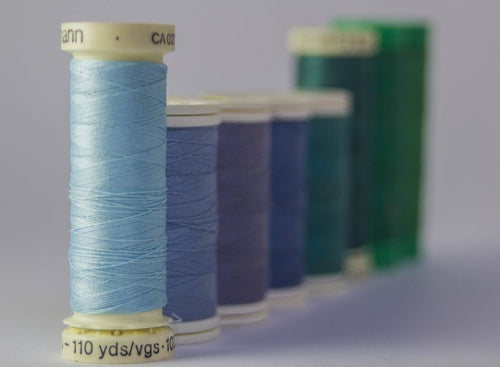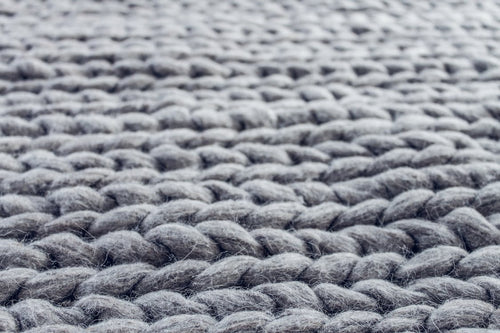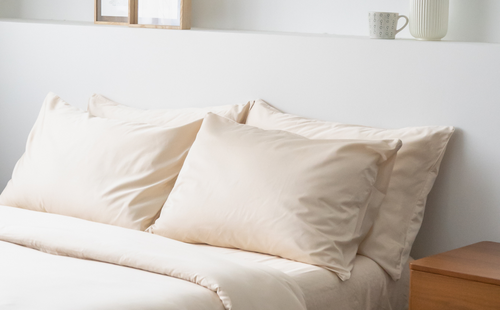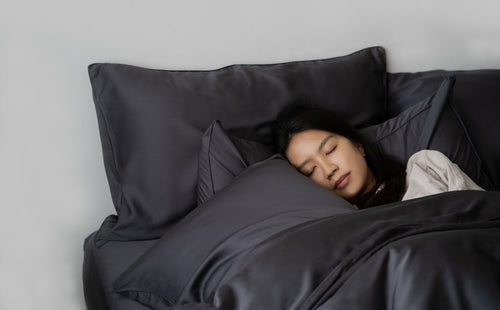Terms such as “single-ply” and “multi-ply” have commonly been used in many different types of products, especially in the case of tissue paper. However, despite their wide usage, these terms can refer to completely different things depending on the product. These include bed sheets as well.
What does ply in bed sheets mean exactly? In this article, we’ll demystify this term and why it’s imperative to understand it when choosing quality bed sheets in Singapore.
What Is Ply?

Image by Gustavo Fring from Pexels
Generally, the word “ply” is used to describe a layer of a certain material combined with other layers of the same material to provide strength. This term is most commonly used in reference to threads.
Then, what about in the context of bed sheet materials? For bed sheets, a ply refers to the number of strands twisted together to form a slightly thicker and stronger thread.
Despite the definition, a ply can also be made entirely of only singular threads, which in this case would be referred to as a single-ply yarn. Another common type is multi-ply yarns, which consist of two to three threads twisted together to form one.
How Ply Count Affects Overall Quality of Bed Sheets

Featuring Weavve’s TENCEL™ Fitted Set Bed Sheets in Midnight Blue
Knowing the implications of ply count to the quality of the sheets is pivotal in finding the perfect linen for you. When it comes to the number of strands, the following factors are mainly affected:
Flexibility
The reason why ply count affects the flexibility of fabric is due to the tightness of the weave. With single-ply, the weave will not be as tightly woven, and hence, not as stretchy, while compared to double-ply threads, they are woven more compactly which allows the fabric to extend.
Durability
More strands may be greater in numbers but it is the quality of each strand that determines the lifespan of a fabric. Multi-ply yarns often use cotton with shorter staple lengths and inferior quality. These produce thicker, coarser, and heavier threads because weaker fibers are twisted together to provide false strength.

Image by Eneida Nieves from Pexels
Breathability
Though double ply bed sheets use thinner threads, the fact that more strands are squeezed together could likely trap more heat.
On the other hand, those that use only one thread allow more air movement through the weave, creating a breathable material. These textiles are ideal for hot sleepers or those needing some cooling sheets during warmer months.
Texture
A single strand can only be spun from long-staple to extra-long staple cotton. These staple length classifications are guaranteed to deliver better quality. Thus, they result in lighter and luxuriously softer sheets.
Single-Ply Vs. Double-Ply Sheets

Featuring Weavve’s TENCEL™ Classic Set Bed Sheets in Cloud White
Without understanding the differences between the two, one could easily gravitate towards an option that implies “having more”. Some manufacturers may also have opposing claims in efforts to market their products.
But as mentioned earlier, single-ply bed sheets may be less flexible but a notch better in terms of strength, comfort, and feel. Let’s discuss their pros and cons in detail.

Image by Ketut Subiyanto from Pexels
|
Pros |
Cons |
Ideal for |
|
|
Single-ply |
|
|
|
|
Double or multi-ply |
|
|
|
Ply Count Vs. Thread Count: How Do They Relate?

Image by Susanne Jutzeler from Pexels
Before we can talk about how the two affect one another, we first need to explain what thread count is. To put it briefly, thread count for bed sheets refers to the number of vertical and horizontal threads present in one square inch. For example, a 600 thread count sheet could include 300 horizontal threads or “weft” and 300 vertical threads also referred to as “warp.”

Image by Digital Buggu from Pexels
Now here is where the overlap between the two terms occurs. There is a common understanding that high thread count bed sheets will yield softer and finer fabrics, which in turn result in better quality sheets. Although this is generally the rule, it is mostly only true up until a certain point, mainly between the 200 to 600 best bed sheet thread count range.
Any number higher than that will usually end up being of lower quality. Realistically, only around 500 threads can physically fit within one square inch of fabric. The best thread count for bed sheets made of cotton is usually around 300-600.

Image by Arina Krasnikova from Pexels
How does thread count relate to ply count? Simply put, the number of strands directly affects the calculation of a thread count.
The thread count calculated not only takes into account the number of warps and wefts a fabric has but also how many plies there are in a thread. For example, a 600 thread count sheet can either be made from 600 single-ply threads containing 300 warps and wefts, or 300 double-ply threads consisting of 150 warps and 150 wefts.
Despite both options having the same thread count of 600, the two fabrics are ultimately different from one another, with the 600 single-ply fabric being thinner and more breathable, and the 300 double-ply fabric being thicker and more flexible.
Note, however, that other materials such as silk bed sheets use momme count instead of thread count.
Is Yarn Count The Same As Ply Count?

Image by Surene Palvie from Pexels
Although the terms “yarn count” and “ply count” may imply something similar, that is not the case at all. Yarn count refers to the thickness of a strand of yarn determined by its mass per unit length. Usually, it is measured by the number of grams per kilometer of yarn, often referred to as a “Tex”.
In simple terms, this means that the higher the yarn count, the finer and thinner the fabric is, thus, the more soft and comfortable it will be.
Yarn count is of paramount importance because it tells us about the durability, strength, and comfort of the yarn - all of which are factors to consider when looking for quality sheets. This means that the numbers have to be precise and should not be left to estimation.
Weavve’s TENCEL™ Lyocell Sheets

Featuring Weavve’s TENCEL™ Fitted Set Bed Sheet in Sky Blue
Weavve’s TENCEL™ bed sheets are woven with the renowned Lyocell fibers (100% Lenzing TENCEL™) that are spun into the finest 80s yarn count threads. These fine single ply threads are then woven into 400 thread count fabric, giving you stronger, smoother, and lighter sheets.
-
Shop TENCEL™ Bedsheets Singapore
Weavve’s Cotton Bed Sheets

Featuring Weavve’s Cotton Classic Set Bed Sheet in Cloud White
Using a sateen weave pattern as well as processes like singeing and calendering, our cotton sheets provide a luxurious sheen matte finish and smooth sheet feel. They don't shrink even after repeated washing because of their pre-shrinking properties.
-
Shop Cotton Bed Sheets Singapore
RESPONSIBLY MADE
Here at Weavve, we pride ourselves on being committed to responsible sourcing, production, sale and use of our products. We take great effort in ensuring that our decisions account for all the people who help build our products, the environment and our consumers. From Standard 100 by Oeko Tex® certified sheets to SEDEX certified factories, Weavve makes sure that everyone is cared for at every step of the way.







































